25 Horror Movies About Trauma
This list catalogs horror films that meaningfully explore trauma.
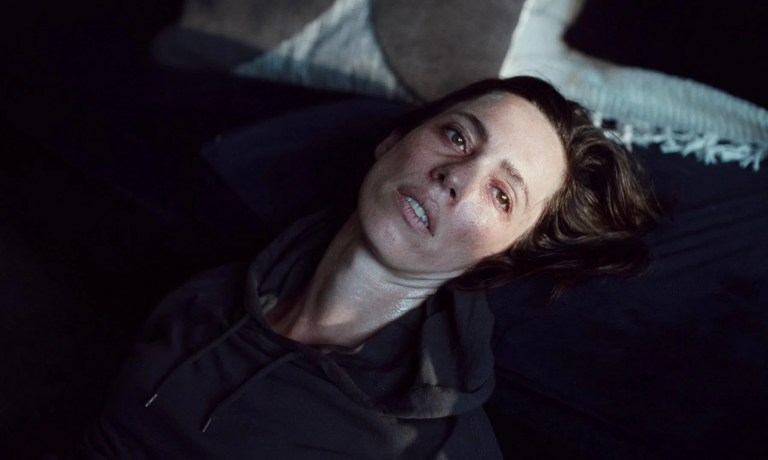
Depression, anxiety, grief, guilt, loss, and abuse can completely rewire a person’s brain, and even fundamentally change who they are. Interestingly enough, studies have shown that horror movies can help people overcome trauma and relieve stress. There are brilliant filmmakers who have long recognized this healing function of the genre. Alfred Hitchcock depicts a man who suffered severe emotional abuse at the hands of his mother as a child in 1960’s Psycho. Don’t Look Now (1973) delves deep into the ghosts of trauma, taking a look at the psychology of the grief of losing a child and the effects it can have on a relationship. More recently, talents like Mike Flanagan and Ari Aster have explored familial trauma in their works. Trauma is also central in the underrated horror TV show Channel Zero. It’s a theme that has been at the core of horror long before cinema, as seen in Gothic literature.

Of course, almost all horror involves experiencing a trauma of some sort, but not all films probe into the processing of trauma. Below is an in-depth look at horror films that offer a meaningful exploration of trauma. Seasoned horror fans are likely familiar with most of the movies on this list. Each title includes a synopsis for those who haven’t yet had the pleasure of viewing these amazing pictures, but be cautious because spoilers follow right after. (Major trigger warnings for grief, SA, childhood trauma, domestic violence, abuse, suicide, and more).
Carrie (1976)
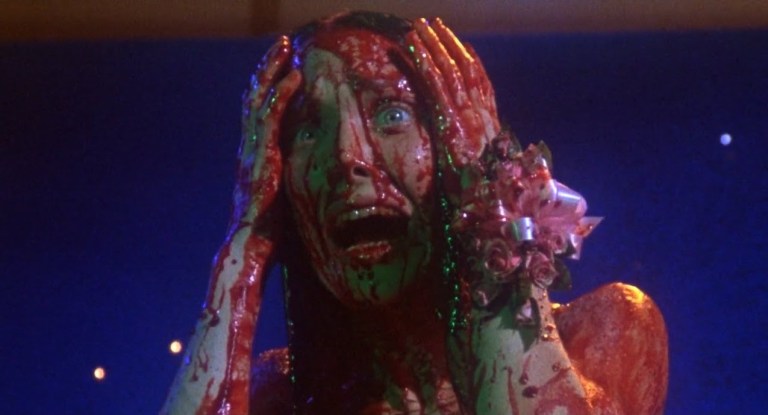
Synopsis: In this adaptation of Stephen King’s novel, a shy and friendless teenage girl is tormented by her cruel classmates and fanatically religious mother until she discovers her telekinetic powers.
What does it say about trauma? This classic coming-of-age story touches on themes of repression, self-discovery, sexuality, power and control, isolation, regret, and so much more. It’s also a visceral portrayal of the insidious effects that trauma can have on a person. Carrie’s (Sissy Spacek) powers can be interpreted as a manifestation of her repressed emotions—rage spawned by the horrible abuse she endured at the hands of her peers and her own mother. Carrie’s short tragic life was spent alone in isolation. She never knew what it was like to feel free or at peace, suffocated by the confines of her religious zealot mother. Mrs White (Piper Laurie) was a woman so consumed by her own trauma that she was incapable of any rational action or ounce of love. For years, critics have been calling Carrie White the first of her kind, the victim and the villain—a protagonist in which evil lurks. However, this isn’t the case. The real monsters are the classmates who terrorized her and the mother who was supposed to protect her. Carrie was born into an unkind world that had nothing to offer her but cruelty.
A Tale of Two Sisters (2003)
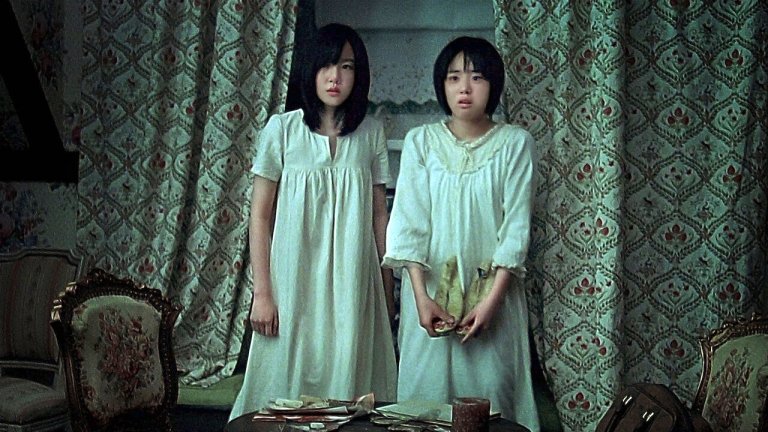
Synopsis: Su-mi (Im Soo-jung) returns home after spending time in a mental hospital, where she’s reunited with her beloved sister Su-yeon (Moon Geun-young), her widowed father and his not-so-pleasant new wife. Strange events begin to plague the home, as Su-mi suspects the worst of her stepmother.
What does it say about trauma? “Do you know what’s really scary? You want to forget something. Totally wipe it off your mind. But you never can. It can’t go away, you see. And it follows you around like a ghost.” A Tale of Two Sisters is a tale of grief and trauma disguised as a ghost story. After the traumatic deaths of her mom and sister, Su-mi is so consumed by guilt and loss that she can’t handle reality, so she creates a new one, envisioning her sister still alive and manifesting a more evil persona of her stepmother. Her sister, though only a hallucination, is her only comfort after her home, once a sanctuary, became a place of horror. Su-yeon is representative of the time in Su-mi’s life where she was happy and had normalcy. Processing her death would mean letting those things go. In the scene where her “stepmother” tries to kill her with a garden statue, it’s really just Su-mi trying to liberate herself from her torment. Trauma and grief never leave you, they haunt you. The films tell us that we must find ways to cope.
Jennifer’s Body (2009)

Synopsis: High school cheerleader Jennifer Check (Megan Fox) turns into a succubus with an appetite for the flesh of teenage boys, which horrifies her best friend Needy (Amanda Seyfried), who wants to put an end to her carnage.
What does it say about trauma? The world owes Jennifer’s Body a huge apology. It was initially criminally misunderstood by critics, audiences, and the studio itself, who marketed a smart feminist movie to the male gaze. In the years since its release, Jennifer’s Body has become a beloved cult classic, especially among young women who know what it’s like to be objectified, sexualized, and used by men. Jennifer’s violent sacrifice at the hands of the talentless band of Low Shoulder serves as a metaphorical rape. It was all about the power it would bring them. They didn’t view Jennifer as a person. They didn’t even remember her name. The lead singer cracks jokes during the ritual and sings the lyrics to Tommy Tutone’s “Jenny” before slaughtering Jennifer, with his bandmates excitedly joining in. The twisted humor while the murder of a teenage girl plays out on screen represents how normalized it is to hear about a woman’s body being used for someone else’s benefit without her consent. The rest of the film deals with the aftermath—how sexual assault completely changes a person and the coping of that trauma.
It Follows (2014)
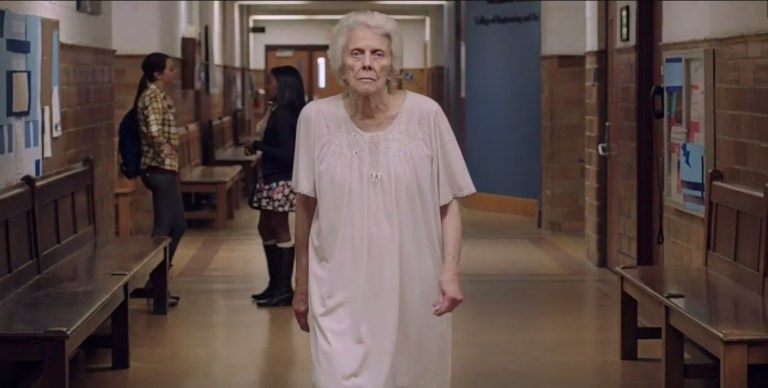
Synopsis: 19-year-old Jay (Maika Monroe) becomes the victim of a fatal curse that’s passed down through sex. An entity who can take the form of anyone will stalk her until it kills her, unless she passes it on to someone else.
What does it say about trauma? The nameless shapeshifting entity stalking Jay is the trauma of a sexual assault survivor personified. While Jay consents to sex with Hugh, she’s given “It” without her knowledge and permission—a violation of her body and autonomy. The film alludes to sexual assault when Hugh chloroforms her and ties her up by force to reveal that he only used her to pass on the curse. Scenes that follow show Jay lying in bed depressed with a lack of appetite, standing in front of the mirror examining her body, and later, in bodies of water metaphorically “cleansing” herself—common behaviors among victims. When Jay starts being followed, initially those around her don’t believe her and minimize the threat of the monster—an all too familiar experience with victims. The fact that “It” can only be seen by the person who it has latched onto parallels how trauma only exists in the reality of the victim. Jay’s mental state and confidence deteriorate. She doesn’t appear sure about wanting to have sex with Greg (Daniel Zovatto), but she does so anyway in an attempt to cope with her trauma, representative of the unhealthy relationship with sex that some victims develop after assault. In the end, Jay realizes that she’ll never truly escape “It” and that she needs real support, which she finds in Paul (Keir Gilchrist), much like victims of SA must learn to live with their trauma.
Goodnight Mommy (2014)

Synopsis: This German horror follows Lukas (Lukas Schwarz) and Elias (Elias Schwarz), two twin boys who start to doubt that the bandaged woman with a strange demeanor who has returned home from the hospital after cosmetic surgery is actually their mother.
What does it say about trauma? Goodnight Mommy is a story about how everyone deals with trauma and grief differently and how both can chip away at our mental health. For much of the film, the viewer understands why the boys are convinced that this woman is an imposter, we even come to believe it as much as they do. Yet, there are moments where the possibility that they’re actually torturing their real mom is so strong. As their small acts of rebellion evolve into serious acts of violence, this sense becomes more unsettling. When the reveal finally happens in one of the most emotionally devastating moments in horror, it’s confirmed that this poor woman was the real mom all along. Lukas died prior to the events of the film. When she tells Elias that it wasn’t his fault, it’s implied that he was somehow involved in the death of his brother. Unable to cope with the guilt and the reality that he was never going to see his twin again, he imagined him alive. His grief was so heavy that even in the end he couldn’t accept reality, lighting the house on fire with his mother inside of it, his fate left ambiguous. If Elias had gotten proper help—help his mother knew he needed—he’d have been able to properly process his trauma, avoiding further tragedy.
Gerald’s Game (2017)

Synopsis: Jessie (Carla Gugino) and her husband Gerald (Bruce Greenwood) try to bring the spark back into their marriage at an isolated lake house. Gerald dies unexpectedly, and Jessie is left handcuffed to the bed frame. Old dark secrets resurface that must be confronted in order for her to break free.
What does it say about trauma? Mike Flanagan gives a delicate portrayal of unresolved childhood trauma caused by sexual abuse, while managing the subject with weight and impact. His film highlights how that kind of trauma can alter the course of a life, the lengths one will go to keep that dark secret buried, and how repressing such a wound can destroy a person from the inside out. In the film, the sexual and emotional abuse Jessie experienced at the hands of her father drives her every choice in her adult life, without her even realizing. She married a man who, just like her father, objectified her and was psychologically abusive. Throughout their marriage, she ignored signs of Gerald being a misogynist and a cheater. As the hallucination of herself points out, her father put her in handcuffs way before Gerald ever did. Jessie lived her life in “problem, panic, denial,” looking away and hoping the issue would disappear. It isn’t until she’s handcuffed to the bed and trapped with her visions that she’s forced to confront her trauma—inflicted by both her father and husband. In the end, Jessie embraces her pain, thus liberating herself. Learning to live with her trauma enables her to help other victims.
The Invisible Man (2020)
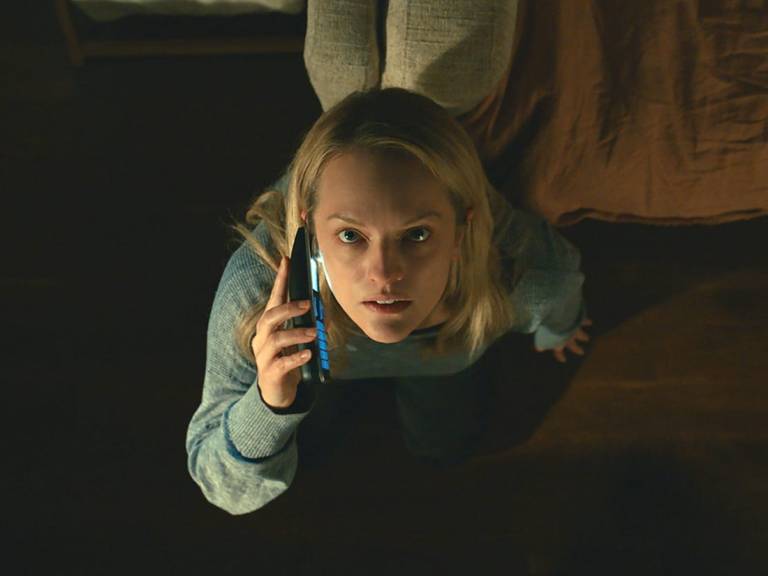
Elisabeth Moss in The Invisible Man (2020)
Synopsis: Cecilia (Elisabeth Moss) leaves her abusive boyfriend Adrian (Oliver Jackson-Cohen). Shortly after, she’s informed of his suicide and of the vast fortune he left her. As strange events plague her, she’s convinced that he’s still gaslighting and stalking her. The problem is that no one, including her, can see him.
What does it say about trauma? The horror in The Invisible Man isn’t rooted in its science fiction, but in its realistic portrayal of domestic abuse and the lasting effects of that kind of trauma. The film opens with Cecilia narrowly escaping a relationship in which she was manipulated, isolated, gaslit, and psychologically and physically abused. Her elaborate and meticulous planning tells the audience everything about the monster who has tormented and controlled her life, as well as illustrates the imbalance of power dynamics. The rest of the film focuses on the psychological consequences that come from intimate partner violence. Cecilia has left, but she’s still trapped living in fear and looking over her shoulder. Instead of depicting dramatized violence against a woman on screen, writer-director Leigh Whanell captures the trauma post-abuse, rejecting the erroneous idea that abuse must be physical and must be visible to be real. Elisabeth Moss’s evocative performance makes us feel her terror—her distress, frustration at not being believed, helplessness, and loneliness. The invisible man stalking her is the metaphorical and literal representation of the shadow of an abuser looming over his victim—and Cecilia’s trauma personified.
Censor (2021)
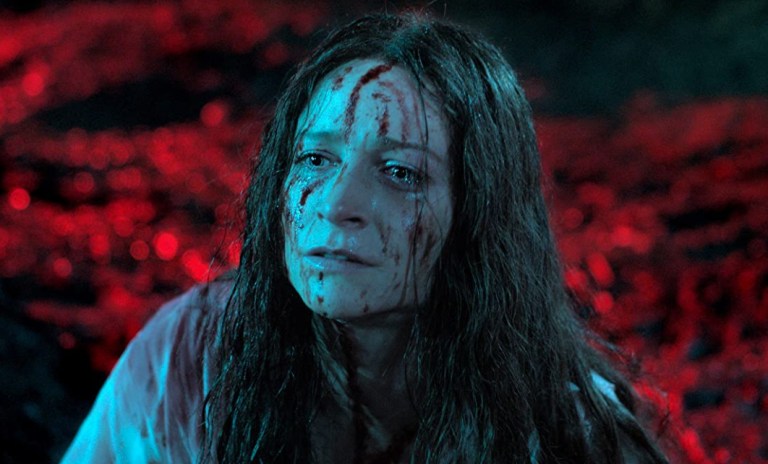
Synopsis: This arthouse horror is set in the 1980s, during Britain’s censorship of video nasties. Film censor Enid Baines (Niamh Algar) encounters a video that echoes hazy childhood memories surrounding her sister’s disappearance and becomes convinced she’s still alive.
What does it say about trauma? “People construct stories to cope…You’d be surprised what the human brain can edit out when it can’t handle the truth.” Prano Bailey-Bond’s masterpiece of a debut asserts trauma as a form of self-censorship. Enid’s brain censored part of her memory to cope with the harsh reality of her sister’s disappearance. Although highly likely, the film is ambiguous on Enid’s direct involvement. Whether she brutally murdered her sister and blocked it out, like The Amnesiac Killer, or she just blames herself for her abduction, Enid has carried that weight since the day she walked out of the woods alone. After reviewing the movie Don’t Go in the Church, something in Enid is unlocked, eliciting a physical and psychological reaction. Her repressed trauma descends into madness. The lines between fiction and reality become increasingly blurred, reaching a climax when Alice (Sophia La Porta) screams at Enid that she isn’t her sister. Whether it’s grief or guilt, the heavy truth is too much to bear as she yells, “No, you have to be her, please!” In her deranged state, she has a rosy vision in which she saves her sister and brings her back to her parents, when in reality Alice is kidnapped and horrified. Enid’s trauma took control of her story because she never confronted it.
Resurrection (2022)

Synopsis: Rebeca Hall stars as Margaret, a woman whose ordered, carefully constructed life becomes untangled when her sadist ex David (Tim Roth) returns, forcing her to confront the horrors of her past.
What does it say about trauma? There’s ambiguity over how much of the events of the film are real. Was Ben actually living inside David’s stomach for two decades? Was David just gaslighting Margaret into being under his control again? Was the ending her fantasy? The answers to these questions don’t truly matter. Resurrection is a character study of a woman who escaped a horrifyingly traumatic relationship when she was young, and who has spent the last twenty years suppressing her trauma and rebuilding her life by being in control of every aspect. She’s a successful executive. Her attire and home are meticulous. She rules over her teenage daughter. Even her romantic life is precisely constructed and compartmentalized. Instead of having a real relationship, she carries out a physical one with her married co-worker—he’s unavailable, therefore safe. The film draws attention to the insidious nature of psychological and emotional abuse, whose effects hide in plain sight. Maggie never properly processed her trauma, bottling it up for years instead working to heal. Her carefully calculated life was always bound to unravel.
Stopmotion (2023)
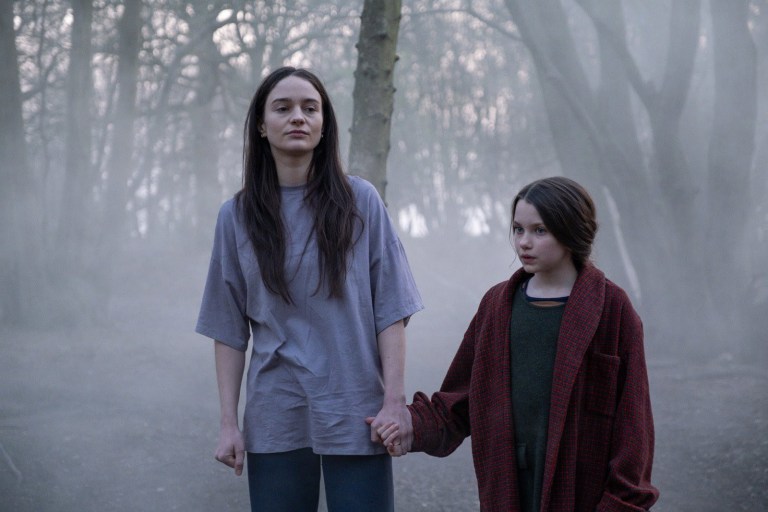
Synopsis: After the loss of her overbearing mother Suzanne (Stella Gonet), Ella Blake (Aisling Franciosi), a talented stop-motion animator, becomes consumed by her grotesque creations. As she unravels, the characters in her project begin to take a life of their own.
What does it say about trauma? Ella grew up with a domineering mother who never let her have her own perspective, restricted her creativity, verbally abused her, and controlled her. As an adult woman, Ella isn’t free—she doesn’t get to have a social life, she sneaks in after sleeping with her boyfriend, she can’t create anything of her own, or even share her ideas. Her life and talents are under the control of her mother. Ella never grew up and out of the confines of her mother—she’s a little girl trapped in the body of a woman, hence the manifestation. Suzanne treated her like an employee, expecting Ella to dedicate everything to her last film. More than that, she treated her daughter like just another one of her puppets. When Ella finally gets the opportunity to express herself through her own art, her familial traumas are released in the darkest of ways. Because she was denied personal expression throughout her whole life, she probes deep for her creations, metaphorically and literally bleeding for her art. Ella is driven mad by the desire to prove herself. The film is a brutal and visceral portrayal of trauma, suppressed anger, repression, and self-loathing.
More meaningful portrayals of trauma in horror…
- Halloween: H20 (1998) explores Jame Lee Curtis’ character’s trauma after enduring previous assaults by Michael Myers.
- Martyrs (2008) a torture victim who escaped from her captors befriends a fellow child abuse victim at an orphanage. 15 years later, she seizes her opportunity for revenge, taking her friend on the horrifying journey with her.
- Oculus (2013) two siblings return to their home 11 years after a haunted mirror took the lives of their parents.
- Possum (2018) a puppeteer haunted by his past returns to his childhood home and is forced to confront the secrets that have tormented his entire life.
- Hereditary (2018) the matriarch of a family dies and her relatives are left haunted by brutal and bizarre occurrences that bring more tragedy into their lives.
- The Dark (2018) an unconventional coming-of-age story about a murderous undead girl living in the woods, who was the victim of terrible crimes, and the abused blind boy who she saves.
- Incident in a Ghostland (2018) an author returns to the house where she experienced a traumatic event with her sister and mother 16 years earlier, and things take a bizarre turn.
- Saint Maud (2019) the religious fervor of a devout young nurse with an obscure past intensifies when she becomes fixated on saving the soul of one of her patients
- Swallow (2019) in this criminally underrated thriller, a young housewife with a seemingly idyllic marriage suffers from the impulse of swallowing inedible objects.
- The Lodge (2019) two children grieving the suicide of their mother torment their father’s girlfriend, who has a dark past, over the holidays at their remote cabin.
- Us (2019) haunted by a traumatic event in her childhood, a woman returns to the beach house where she grew up with her husband and kids. The family’s vacation is interrupted by their doppelgangers.
- She Will (2021) an aging film star recovering from a double mastectomy retreats to the Scottish countryside, where witches were once burned, and takes back her power from a traumatic past.
- Skinamarink (2022) two siblings wake up in the night to find their father gone and that all the doors and windows in their home mysteriously vanished.
- Smile (2022) after witnessing the brutal suicide of one of her patients, Dr. Rose Cotter (Sosie Bacon), who has a troubling past of her own, begins experiencing strange events and becomes convinced that she’s being haunted by something supernatural.
- Men (2022) after the tragic death of her husband, a woman retreats to a remote village to spend some time healing alone, where something from the surrounding woods appears to be stalking her.
- Lovely, Dark, and Deep (2023) strange conspiracies, the mysteries of nature, and trauma intersect in this movie about a new back-country ranger hoping to uncover the origins of a tragedy that has haunted her since childhood.
Further reading:
